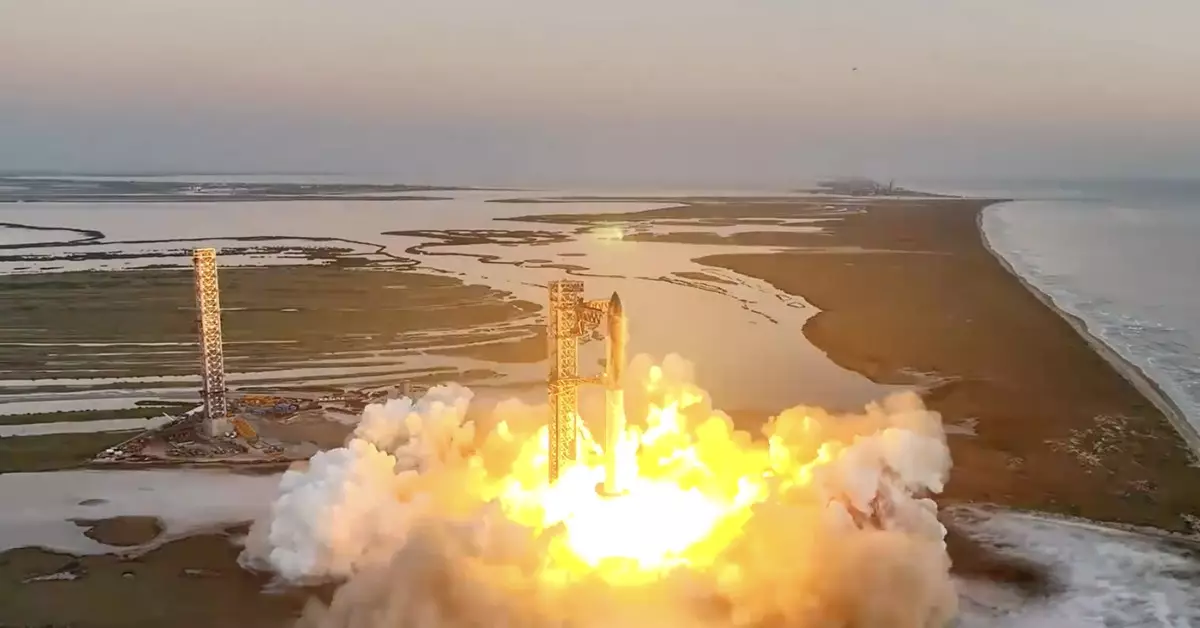SpaceX continues to boldly explore the final frontier with the recent launch of its Starship spacecraft. On the morning of October 12, 2023, SpaceX initiated its fifth flight test from its South Texas launch site, marking yet another significant milestone in the company’s quest to revolutionize space travel. The launch unfolded around 8:25 AM ET, showcasing not only the technological advancements inherent in the Starship program but also the methodical precision that SpaceX is renowned for.
A notable highlight of this flight test was the successful recovery of the Starship Super Heavy booster. For the first time, the booster was returned to its launch platform utilizing a mechanism SpaceX informally dubs the “chopsticks.” This innovative approach involves robotic arms designed to catch the booster mid-flight, effectively minimizing the potential for damage during landfall. Previous attempts had met with varying levels of success, but this smooth retrieval presents a considerable step forward in the operational efficiency of SpaceX’s launch processes. The significance of this achievement cannot be underestimated, as it not only enhances the reliability of future missions but also contributes to SpaceX’s overall cost-efficiency and sustainability goals.
Upcoming Challenges: Splashdown and Certification
While the recovery of the booster showcased a successful launch phase, SpaceX’s next hurdle will involve the controlled re-entry and splashdown of the Starship itself, which is anticipated to occur in the Indian Ocean. This phase of the mission is crucial, as it will serve to validate the design of the spacecraft under real operational conditions. Previous tests have demonstrated the complexities involved with re-entry tracking and heat shielding, and the successful return of the Starship is critical for the vehicle’s certification for future missions, including those involving crewed flights to the Moon and potentially Mars.
The lead-up to the successful launch was not without its challenges. SpaceX encountered some delays as personnel worked diligently to clear maritime traffic from the airspace surrounding the launch zone. This operational necessity pushed the flight test close to its 30-minute launch window, emphasizing the intricate balance between planning, execution, and real-time problem-solving inherent in space missions. Moreover, the Federal Aviation Administration’s (FAA) expeditious approval process, received just two days prior to the launch, demonstrates a burgeoning partnership between SpaceX and governmental agencies that could streamline future launches significantly.
With this recent test, SpaceX has further solidified its position at the forefront of aerospace innovation. The dual successes of the booster recovery and the upcoming plans for Starship’s ocean splashdown highlight the company’s commitment towards establishing reusable spacecraft technology. As SpaceX continues to push the boundaries of space exploration, the combination of cutting-edge technology, rapid assessments, and a proactive regulatory environment will be critical in paving the way for a new era of celestial travel. As the world watches, one thing remains clear: SpaceX is not just testing the limits of technology; they are redefining humanity’s relationship with space.

